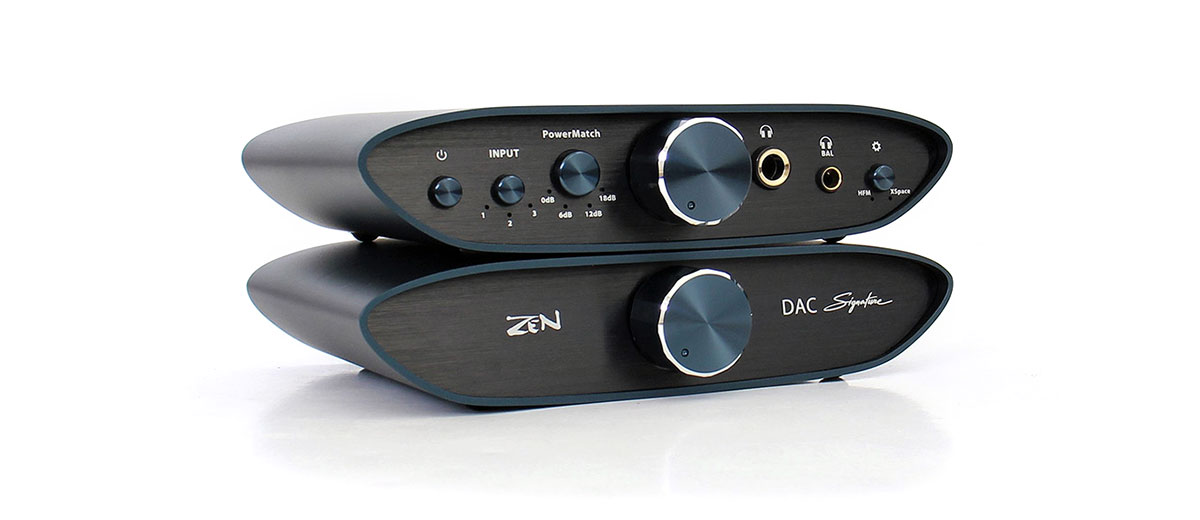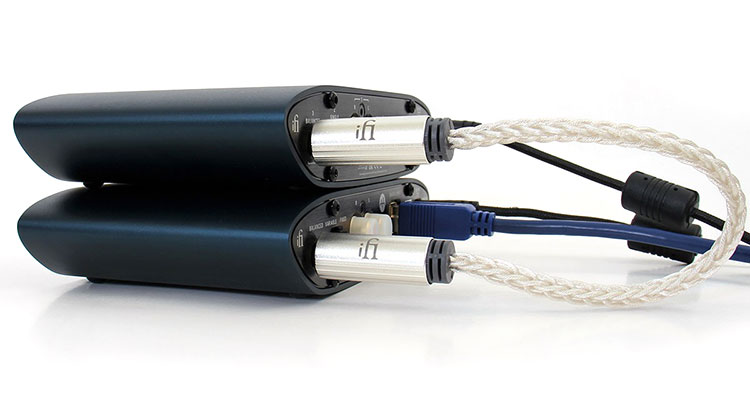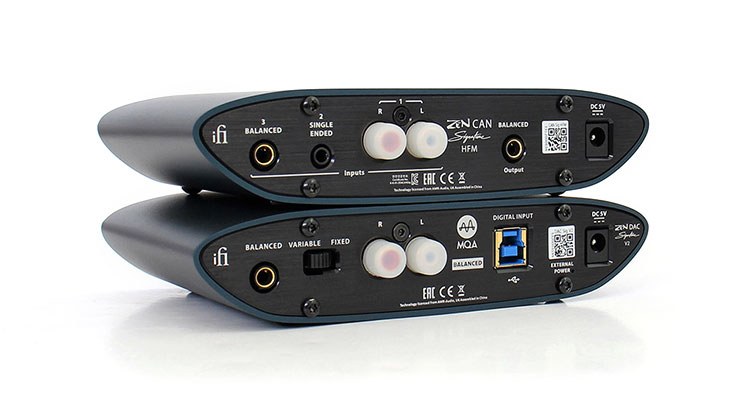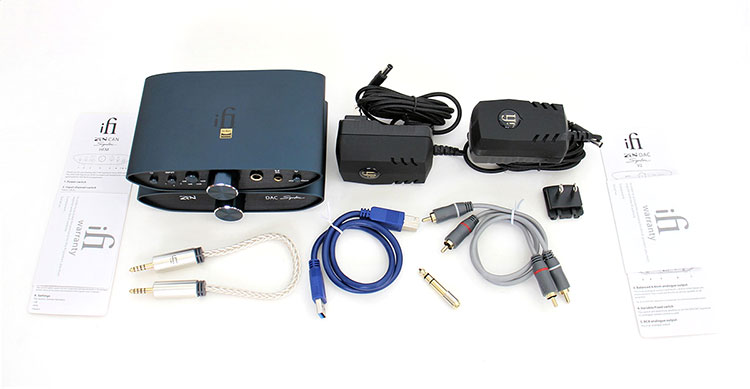The iFi Audio Zen Signature Set HFM is a special edition DAC/amp with a unique ActivEQ curve for HIFIMAN headphone users. It is priced at $599.
Disclaimer: The iFi Audio ZEN Signature Set HFM sent to us for the purposes of this review is a sample in exchange for our honest opinion. Thank you to iFi Audio for giving us this opportunity.
You can read more about iFi Audio products we reviewed on Headfonics by clicking here.
Note, this 2-page review follows our new scoring guidelines for 2021 which you can read up on here.
A funny thing happened to me as I was doing research to write up the original iFi Audio ZEN Signature Set review. At one point I thought I was seeing double, then thought perhaps my eyes were failing me. What I was looking at was basically the same dish with a different sauce.
As I was scanning the iFi Audio webpage I ran into another similar ZEN stack Signature Series but it was an HFM set tuned for Hifiman cans so I immediately started to look around for one. Since I have a few Hifiman cans iFi Audio decided to send one over for review.
The HFM set was introduced right under our noses and in iFi Audio’s typically surprising manner. However, we have a review sample nonetheless and will probably go further in-depth with this HFM set insofar as the effects this Set has on Hifiman headphones.

Tech Highlights
The differences between the two sets, the 6xx and the HFM variants are in the tuning and effects of the HFM feature on the amplifier section which replaces the 6xx feature. The other change that has taken place is with the bundled power supplies but not much else has changed or so it seems.
Other than that the amplifier section specifications remain similar to the original ZEN CAN but with a different color scheme and a couple of tiny build tweaks very similar to the 6xx variant.
When the 6xx variant was reviewed I actually got the second iteration of the DROP variant which still came with the 8 core XMOS DAC but the front panel was changed to look identical to the ZEN Signature version 2 DAC. Now both HFM and the newly boxed 6xx variants come with the 16 core XMOS DAC section.
You could tell which version of DAC you have by the firmware version or the serial number but not visually anymore. The 8 core uses the 5.xx version firmware while the 16 core uses the 7.xx versions and I need to remind everyone that the firmware versions are not interchangeable. However, both have the same perfect bit and GTO filter versions available for download.
DAC
The 16-core XMOS chip in combination with the dual Burr-Brown chips and custom firmware enables full MQA hardware folding and bit-perfect capability. In other words, all decoding on this DAC is done at the hardware level and no software intermediate rendering is involved as in previous units.
PCM goes up to 32bit 384 kHz, DSD up to 256, DXD up to 384, and are all bit-perfect hardware rendered which is a nice improvement over their previous 8 core XMOS models.
The dual-mono fully symmetrical true differential balanced circuitry along with an improved GMT system plus improved jitter keeps everything nice and tidy and I really doubt you cannot throw a curb ball that this DAC can’t bat out of the park.
Amplifier
The Class A discrete circuitry is basically the same but sometimes I doubt if this design is a pure class A because it runs cool most of the time especially on the lowest gain setting and regardless of the volume amount applied. The funny part is that it runs the warmest while it’s on and not outputting sound.
The same iFi Audio custom OV series OP amps are used and the same fully discrete and balanced output which is a fully symmetric dual-mono design is in play here. The parts list stays the same and is read off as a high-quality parts list.
Performance Numbers
I could finally correctly grasp the power specifications since the specifications were more specifically laid out now. The output power of the HFM amplifier is rated at 1600mW at 32Ω off the 6.35mm plug and 1890mW at 64Ω off the balanced 4.4mm side.
There’s not much of a difference between the two headphone output ports honestly. It seems both headphone outputs are similar in wattage and with easy-to-drive headphones I would say it’s not necessary to use the balanced side.
However, looking closer at the specifications there is a benefit to using the balanced output because of the 15.2V output capability versus the available 7.6V on the single-ended side and although wattage is similar on both ports the significantly higher voltage rating helps plenty with harder to drive and planar cans.
The DAC section also swapped out the red board for a black one but specifications remain the same as the V2 XMOS 16-core variant with the dual Burr-Brown chip design.
Design
The iFi Audio Zen Signature Set HFM changes in some ways from the original CAN design and the first obvious change is the color scheme not only on the outside but also on the inside. The PC board is now a blackboard instead of a red one.
The same iFi Audio exclusive, robust and unique rounded trapezoid shells were kept and it seems the cabinets are made using the same mold. The all-metal outer shell and the blue-colored theme is a nice change from the original retro silver and grey ZEN DAC and ZEN CAN although the retro look is not too bad either.
The buttons seem to have tighter tolerances and do not rattle like the buttons on the first batches of the ZEN CAN. The amplifier section buttons on the HFM do not have that small issue and construction tolerances seem to have been tightened up some.
The one complaint I have appearance-wise has to do with the knurled volume knob position indicator which is a dimple in the same color as the button surface so it makes it hard to see its position in some dark desktop scenarios and I would have preferred them to be silver or white for higher contrast and hence better visibility.
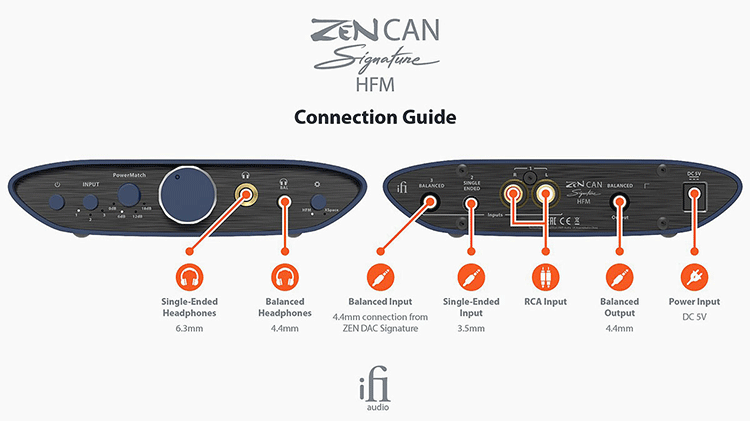
I/O
I think the only lacking area in this set is the lack of digital inputs. The DAC section is exclusively a USB DAC and only has one USB C type B input port. The unit itself could be powered by the USB port but still comes with a 5-volt wall wart and I recommend using external power regardless.
The DAC output section consists of a set of 2.1 volt RCA outputs and a Pentaconn 4.4mm 4.2 volt Balanced output. There’s also a switch to turn those outputs into either fixed or variable outputs by use of the front-mounted volume knob.
The HFM amplifier on the other hand has no lack of inputs and has a total of three front panel selectable inputs. All three are analog inputs and consist of an RCA in, a 3.5mm in, and a 4.4mm Pentaconn input to use in conjunction with the 4.4mm on the DAC section.
You could also daisy chain amplifiers through a second 4.4mm Pentaconn which acts as a variable output on the back of the amplifier section. The amplifier can also act as a preamplifier.
The front panel of the amplifier section has two headphone outputs. One is a 6.35mm TRS and the other is a balanced 4.4mm Pentaconn.
Controls
The DAC section has no controls upfront except for the volume knob but the amp section has plenty upfront but not so much as to a point of looking busy or being crammed up. The DAC does not have a power switch and turns on and off automatically according to the presence of a USB signal.
The HFM amplifier front panel thankfully does have a front-mounted power switch plus a three-way input selector, a four-way Power Match feature, and the HFM with the X space combo button.
The same large knobs that were used on the 6xx set are used here and seem to be controlling the same TOCOS analog potentiometers and they seem to have that same slight channel imbalance that ends when you go past the 8 O’clock position. Once you go past that level the balance seems just fine.
It seems iFi Audio wants to stay away from all digital volume controls but if I was to try and remedy this channel imbalance I would use a lower gain on the 0dB gain setting.
If you use very sensitive IEMs it makes it a bit difficult to listen to at very low volume levels due to the channel imbalance. Most headphones do okay beyond the 0dB gain setting on the Power Match and the quirk seems to diminish.
On a separate note, the 8-core DAC variant volume can be adjusted with the Windows OS volume control but this feature was disabled on the 16 core variant, and iFi Audio claims that this was done again, due to fidelity concerns since the Windows volume can add undesirable noise but I would like to see a way of opting in or out of this feature.
Packaging & Accessories
There are just a few small differences with the included accessories because the boxes and packaging are identical to the 6xx set. The 6xx variant set comes with a pair of 5-volt iPower X wall warts and the HFM comes with a pair of the newer iPower V2 adapters which are also 5-volt variants.
These wall warts are way better quality units if you compare them to what some other companies throw in the box and they provide lots of clean power and are rated at a max output of 2.5 amps. What you miss out on are the illuminated logos of the iPower X and the ability to reach a 3 amp capability.
The rest of the accessories are almost identical as well. You get the two power adapters, a 3 foot USB cable, a 6.35mm headphone plug adapter, and some literature.
One of the other differences is with the included RCA cables because you got two with the 6xx variant but only one with the HFM. There seemed to be a downgrade here also but you still get that excellent 4.4mm Pentaconn cable which is so nice the cable assembly comes in its own box.
Click on page 2 below for sound impressions and select comparisons

